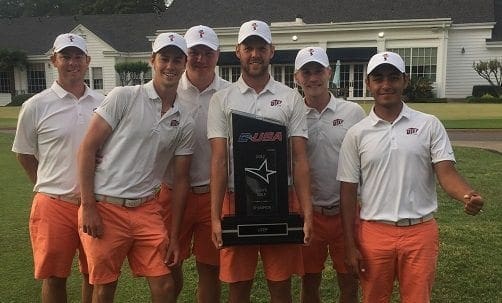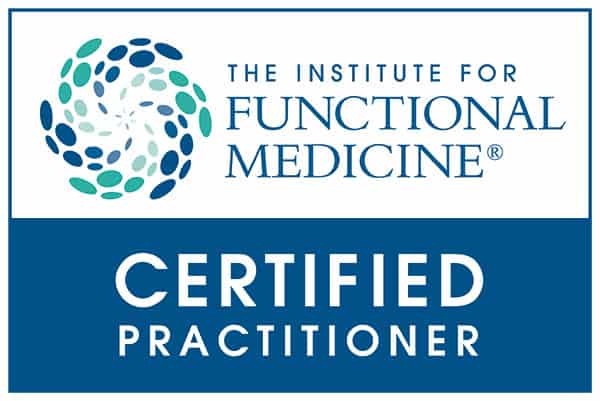
by Dr Alex Jimenez DC, APRN, FNP-BC, CFMP, IFMCP | UTEP (Local) RSS
Related Articles
TEXARKANA � The UTEP men�s golf team defeated Southern Miss (4-1, semifinals) and Charlotte (4-1, finals) in match-play format to win the 2017 Conference USA Men�s Golf Championship at the Texarkana Country Club on Tuesday.
It is the first conference title since 1985 and only the second in program history. The Orange and Blue also punched their ticket to the NCAA Regionals for the first time as a team since 2004.
It was the fitting conclusion to the three-day event for the Miners, who notched the top seed in match play after their first-place showing in stroke play (15-over 879; 287-294-298).
�You have a lot of moving parts going on,� sixth-year head coach Scott Lieberwirth said. �It�s tough to judge [the match]. The best part is we got the first two points on the board. Knowing that we had leads in two other matches, we knew we just needed to hang on and close out one of those matches.�
Battling in a match that was too close to call early, Nicklas Pihl got the Miners off to a solid start in the championship vs. Charlotte. The match with the 49ers� Conor Purcell was all square through eight holes before Pihl found another gear. He won two of the next three holes to go 2UP through the 11th hole, and Purcell could never recover.
UTEP pushed its team advantage to 2-0, thanks to Charles Corner knocking off the 49ers� Matty Lamb, 2UP. Corner started fast by taking the first two holes, an edge he maintained through the turn. Lamb�s comeback started on the back nine with wins at both 10 and 13 to make the match all square. Corner remained steadfast, winning both the 15th and 18th holes to put Lamb away.
Charlotte tried to claw back into the championship with Tyler Young edging Aaron Terrazas, 1UP. The match was all square through 15 holes but Young found the necessary separation after carding a 3 and Terrazas recorded a 4 on the 17th hole. Both golfers fired 4s on the 18th hole to give the 49ers a team point.
The lone senior on the team Frederik Dreier then took center stage. The reigning C-USA Golfer of the Year was in a back and forth match with Charlotte�s John Gough. All squared through 10 holes, Dreier won three of the next five holes to take control of the dual. Gough claimed hole No. 16 to get within two, but Dreier prevailed, sending the Miners into celebration.
�It was very emotional,� Dreier said. �This being my last conference [tournament] ever and to win it with the guys was amazing.�
Those sentiments were expounded upon by Lieberwirth.
�I think fittingly, it was Frederik Dreier�s match that clinched it for us, him being a senior, him being the reigning Conference USA Player of the Year,� Lieberwirth said. �It couldn�t have been a better ending for us to have Freddie finish it.�
Andreas Sorensen lost the first two holes to the C-USA individual medalist Seth Gandy before a stunning reversal. He squared with Gandy by the fifth hole and vaulted out to 3UP through hole No. 13. Gandy�s rally came too little, too late, as Sorensen won 1&2.
The Miners made it to the final round of match play after a hard-fought 4-1 win over Southern Miss. The tournament was shortened a day due to a forecast of inclement weather on Wednesday.
�It [weather] forced us to have to play two rounds in back-to-back days, which is something we never do,� Lieberwirth said. �Without question, fatigue was a factor for both teams. We were fortunate to get to that championship match. It�s difficult for everybody involved, but our guys fought through it, they continued to play well throughout the afternoon. They just did a great job.�
Pihl set the tone against the fourth-seeded Southern Miss Golden Eagles with a 3&2 conquest of Walker Kesterson. It was all squared through the opening six holes before Pihl won two of the next three to make the turn 2UP. The Golden Eagle briefly cut into the lead on hole No. 11, but Pihl recovered immediately on No. 12 and never looked back.
Sorensen raced out to a huge lead, taking each of the first five holes from the Golden Eagles� Derick Kelting. The margin remained five heading into the 13th hole, before Kelting mounted a rally, winning four of the next five to make the dual tight going into the 18th hole. Sorensen did not flinch however, matching Kelting with a 4 and winning the dual.
USM�s Ryan Argotsinger and UTEP�s Dreier battled back-and-forth early on, with Argotsinger 2UP at the turn. Dreier�s aspirations of a comeback didn�t come to fruition, with Argotsinger posting a 5&4 victory.
As it turned out, that proved to be the lone team point in the match for Southern Miss. The Miners clinched the team win thanks to Corner�s 1UP vanquishing of Matt Lorenz. Terrazas downed Matt Codd 1 & 1 to punctuate the victory.
Corner quickly dug himself an early hole, with Lorenz jumping out to a 2UP lead through three holes. Corner responded brilliantly, tasting victory on six of the next seven holes to stand 4UP through the 11th hole. Lorenz fought back and eventually clawed back to all square through 17 holes but Corner won the 18th hole.
It was a compelling match between Terrazas and Codd, with action all square through 16 holes. Terrazas found a way to get it done, though, carding a 3 while Codd was saddled with a 5 on the 17th hole.
The NCAA Regionals are slated to begin on May 15.
�I feel like we have got a lot of grown men,� Lieberwirth said. �They act mature, I think they play the game the right way and I think they act the right way, which is something that we want from our program. I couldn�t be any prouder than I am right now.�

by Dr Alex Jimenez DC, APRN, FNP-BC, CFMP, IFMCP | UTEP (Local) RSS
Korir etched himself into the UTEP recordbooks with the second-fastest time in program history, just .02 seconds behind Bert Cameron�s time of 44.58 set in 1980.
Related Articles
UTEP�s freshman Emmanuel Korir was named Conference USA Athlete of the Week after his performance on Saturday at Kidd Field, announced the league office Tuesday afternoon.
The Kenyan clocked the nation�s second-fastest time of 44.67 in the 400m and broke the 37-year old stadium record (Billy Mullins, 45.03, USC, 1980).
Korir etched himself into the UTEP recordbooks with the second-fastest time in program history, just .02 seconds behind Bert Cameron�s time of 44.58 set in 1980.
This is Korir�s second weekly award of the outdoor season. Last weekend, the mid-distance runner clocked the fourth-fastest time in school history with a time of 1:47.19 in the 800m, which rates him 12th in the nation in the event.
The UTEP track and field team travel westbound to Berkley, Calif. for the Brutus Hamilton Open at Edwards Stadium. For live results and breaking news follow @UTEPTrack on Twitter.
Check Also
UTEP Director of Athletics Bob Stull announced on Monday that Kevin Baker has been appointed �

by Dr Alex Jimenez DC, APRN, FNP-BC, CFMP, IFMCP | Diets, Fitness
Seattle, take a bow. Jackson, hit the gym. A new study ranking the nation�s 100 fattest cities has found residents of the Mississippi city topped the scales nationally, while Jimi Hendrix�s hometown has the smallest proportion of overweight residents.
The analysis, by Wallethub.com, found that 70 percent of Americans aged 15 and older are overweight or obese � in line with statistics compiled by the Centers for Disease Control and Prevention. But some cities are more likely to have more residents who hit those thresholds than others.
On balance, the south tended to rank higher in the new study, which has historically been the case, while residents of colder, northern states and the Pacific Northwest fared better.
Dr. Charles Platkin, director of the New York City Food Policy Center and Distinguished Lecturer at Hunter College, City University of New York, tells Newsmax Health the new rankings aren�t entirely surprising but bring attention to regional factors that may play a role in U.S. obesity trends.
“There isn’t any major new information here,” Platkin explains. “There are a lot of variables that go into diet and obesity, including poverty levels, and diet and culture of southern states, for instance.”
The 10 fattest cities on the new list tended to be southern:
- Jackson
- Memphis, Tenn.
- Little Rock, Ark.
- McAllen, Texas
- Shreveport, La.
- Chattanooga, Tenn.
- Mobile, Ala.
- Lafayette La.
- Winston-Salem, N.C.
- Knoxville, Tenn.
At the other end of the spectrum, researchers found the following 10 cities to be on the lowest end of the �obesity� scale:
- Seattle-Tacoma-Bellevue, Wash.
- Portland, Ore.
- Minneapolis-St. Paul, Minn.
- Denver and Colorado Springs, Colo.
- Boston-Cambridge, Mass.
The researchers, as well as the U.S. Department of Agriculture, suggested a variety of factors play a role in U.S. obesity trends. Among them:
Regional variations in diet. The south is famous for barbecue, fried foods, and sweet tea; northern and coastal cities may offer a wider range of healthy options of vegetables, whole grains, and fruits. These differences in dietary patterns are influenced by social, demographic, cultural, historical, and economic factors
Poverty. Economic factors play a role in food choices and activity levels. According to the USDA, 42.2 million people live in households where access to healthy foods is limited, often because of poverty-related issues. In such households, families may not be able to afford to eat regular, balanced, healthy meals, or may turn to less-healthy alternatives to save money. Such households are more prominent in the south than the northeast, the west, and the Midwest.
Education. Schooling and personal achievement, uncertainty about jobs, and even access to good grocery stores also factor into food choices linked to obesity rates.
Activity, exercise trends. Northern metropolitan cities and other areas, such as the Denver area, that are popular places for healthy physical activities � such as hiking, skiing, and other outdoor sports � tend to rank lower in obesity scores.
Shopping habits. The shopping and dietary habits of people who participate in the Supplemental Nutrition Assistance Program (SNAP), formerly known as Food Stamps, are other factors. Most households receiving SNAP benefits, according to the USDA, don�t consume the same quantities of fruit, whole grains, and other healthy foods as people who aren�t on receiving food assistance.
USDA research has shown that 11 states � located along the western and southern borders of the country plus the District of Columbia � have higher-than-average levels of poverty and more people receiving SNAP benefits. These factors explain, at least in part, the prevalence of obesity across southern states. There is a higher level of food insecurity and greater use of SNAP benefits.
Platkin notes the survey rankings don�t aim to solve the nation�s obesity crisis, but they could inform aggressive promotions and education � similar to what Americans have done with in past public health campaigns, such as those aimed at tobacco use.
“Look at things we have done successfully, like smoking cessation and recycling,” he says.
Culturally significant programs like food access and cooking classes might make a difference in regions of the country where obesity rates are especially high, he adds.
Combatting poverty could also lead to improvements in diet and activity levels in some cities.
“Culturally, what are the diets, how much outdoor appeal is there, physical activity, and what about binge drinking in these areas?� he says.
To check out the complete list of the nation�s 100 fattest cities, check out Wallethub.com.

by Dr Alex Jimenez DC, APRN, FNP-BC, CFMP, IFMCP | Anti Aging
Researchers in the USA have developed an ingenious system that uses virtual reality to help prevent falls by detecting and reversing balance impairments in elderly people.
The sense of balance declines in elderly people, as well as in those with neurodegenerative diseases such as multiple sclerosis. This leads to greater reliance on visual cues to maintain balance and prevent falls.
Researchers from the University of North Carolina at Chapel Hill (UNC) and North Carolina State University (NC State) developed a system to recreate the visual illusion of losing balance, tested on volunteers walking on a treadmill. The participants walked on machines set up in front of a large screen depicting a moving hallway.
“As each person walked, we added lateral oscillations to the video imagery, so that the visual environment made them feel as if they were swaying back and forth, or falling,” explains study co-author Jason R. Franz.
The researchers used 14 cameras to record the positions of 30 reflective markers on each volunteer’s legs, back and pelvis.
In response to visual disruptions and perceived loss of balance, the volunteers took longer or shorter steps, as the scientists expected. Their head and trunk swayed further sideways with each step. The variability of these measures — their tendency to change from one step to the next — increased much more significantly.
During the experiment, the researchers analyzed muscles’ ability to respond to perceived loss of balance and identified which muscle groups worked to correct it. The researchers found that individual muscles were highly coordinated in preserving walking balance.
The scientists’ data provide important reference measurements that could be used in future clinical procedures to detect balance impairments before they start to cause individuals to fall.
This kind of system could be used as a therapeutic tool to help teach balance-impaired individuals how to improve their balance and avoid falls.
According to the study, falls lead to the hospitalization or death of hundreds of thousands of elderly Americans every year.
The study is published in the journal Nature Scientific Reports.

by Dr Alex Jimenez DC, APRN, FNP-BC, CFMP, IFMCP | Anti Aging
More bad news for plus-sized Americans: Obesity is the leading cause of preventable life-years lost in the nation, a new study finds.
Obesity steals more years than diabetes, tobacco, high blood pressure and high cholesterol — the other top preventable health problems that cut Americans’ lives short, according to researchers who analyzed 2014 data.
“Modifiable behavioral risk factors pose a substantial mortality burden in the U.S.,” said study lead author Glen Taksler, an internal medicine researcher at the Cleveland Clinic.
“These preliminary results continue to highlight the importance of weight loss, diabetes management and healthy eating in the U.S. population,” Taksler said in a clinic news release.
Obesity was linked with as much as 47 percent more life-years lost than tobacco, his team said.
Tobacco, meanwhile, had the same effect on life span as high blood pressure, the researchers found.
The researchers noted that three of the top five causes of life-years lost — diabetes, high blood pressure and high cholesterol — can be treated. And helping patients understand treatment methods, options and approaches can have a significant effect, the study authors said.
The findings also emphasize the importance of preventive care, and why it should be a priority for physicians, Taksler’s team said.
However, the researchers acknowledged that some people’s situations may be different than those of the general population. For example, for someone with obesity and alcoholism, drinking may be a more important risk factor than obesity, even though obesity is more significant in the general population.
“The reality is, while we may know the proximate cause of a patient’s death — for example, breast cancer or heart attack — we don’t always know the contributing factor(s), such as tobacco use, obesity, alcohol and family history,” Taksler said. “For each major cause of death, we identified a root cause to understand whether there was a way a person could have lived longer.”
The findings were scheduled for presentation Saturday at the annual meeting of the Society of General Internal Medicine, in Washington, D.C. Research presented at meetings should be considered preliminary until published in a peer-reviewed medical journal.

by Dr Alex Jimenez DC, APRN, FNP-BC, CFMP, IFMCP | Diets, Fitness
A nutrient in meat and eggs may conspire with gut bacteria to make the blood more prone to clotting, a small study suggests.
The nutrient is called choline. Researchers found that when they gave 18 healthy volunteers choline supplements, it boosted their production of a chemical called TMAO.
That, in turn, increased their blood cells’ tendency to clot. But the researchers also found that aspirin might reduce that risk.
TMAO is short for trimethylamine N-oxide. It’s produced when gut bacteria digest choline and certain other substances.
Past studies have linked higher TMAO levels in the blood to heightened risks of blood clots, heart attack and stroke, said Dr. Stanley Hazen, the senior researcher on the new study.
These findings, he said, give the first direct evidence that choline revs up TMAO production in the human gut, which then makes platelets (a type of blood cell) more prone to sticking together.
Choline is found in a range of foods, but it’s most concentrated in animal products such as egg yolks, beef and chicken.
Hazen said he and his colleagues at the Cleveland Clinic wanted to isolate the effects of choline on people’s levels of TMAO and their platelet function. So they studied supplements.
The researchers had 18 healthy adults –10 meat-eaters and eight vegetarians/vegans — take choline supplements for two months.
The supplements provided around 450 milligrams of choline daily — roughly the amount in two or three eggs, Hazen said.
One month in, the study found, the supplements had raised participants’ TMAO levels 10-fold, on average. And tests of their blood samples showed that their platelets had become more prone to clotting.
“This study gives us one of the mechanisms by which TMAO may contribute to cardiovascular disease,” said Dr. J. David Spence.
Spence, who was not involved in the study, directs the Stroke Prevention & Atherosclerosis Research Centre at Western University in London, Ontario, Canada.
For the healthy people in this study, Spence said, the TMAO rise from choline might not be worrisome. But, he added, it might be a concern for people at increased risk of heart disease or stroke.
Spence suggested those individuals limit egg yolks, beef and other foods high in choline.
Hazen had similar advice. “You don’t have to become a vegetarian,” he said. “But you could try eating more plant-based foods, and more vegetarian meals.”
He also pointed to the Mediterranean diet — rich in olive oil, vegetables and fish. In an earlier study, Hazen said, his team found that a compound in olive oil seems to inhibit TMAO formation.
The new study uncovered yet another compound that may counter TMAO: low-dose aspirin.
In a separate experiment, the researchers had some participants take 85 milligrams of aspirin (a baby aspirin) a day, in addition to choline supplements. That, it turned out, lessened the rise in TMAO and the change in platelet activity.
Doctors already prescribe low-dose aspirin to certain people at risk of heart disease and stroke.
It’s possible, Hazen said, that aspirin’s effects on TMAO are one reason it helps ward off cardiovascular trouble.
The current study is small and preliminary. But it’s the latest to suggest that the gut “microbiome” plays a key role in cardiovascular disease, Spence said.
The “microbiome” refers to the trillions of bacteria that dwell in the gut. Spence said researchers are just beginning to understand how gut bacteria and their byproducts affect the cardiovascular system.
But one hope, he said, is to figure out what balance of gut bacteria supports cardiovascular health — and possibly use probiotic (“good” bacteria) supplements to help treat people at high risk of heart disease or stroke.
Spence said his own lab is working on just that.
There are, of course, many factors in heart disease risk — from age to high blood pressure to diabetes to smoking, Hazen pointed out.
“We’re saying a portion of the risk is related to the gut microbiome,” he said.
Hazen and a colleague report potential royalty payments from several companies related to “cardiovascular diagnostics and therapeutics.” One company, Cleveland HeartLab, recently launched a test for measuring TMAO levels.
The findings appear in the April 25 online issue of Circulation.

by Dr Alex Jimenez DC, APRN, FNP-BC, CFMP, IFMCP | UTEP (Local) RSS
The Reno Aces scored in five different innings Monday and beat the El Paso Chihuahuas 12-1. It was the second Monday in a row that Reno handed El Paso an 11-run loss, as the Aces beat the Chihuahuas 13-2 last Monday in Reno.
Reno scored five runs in a nine-batter first inning, the second consecutive game the Aces brought in four runs or more in the first frame. Ketel Marte went 4-for-6 and came inches away from hitting for the cycle, as his second double of the game hit the top of the right field fence near the foul pole.
Former Chihuahuas outfielder Reymond Fuentes went 3-for-5 with three RBIs for Reno.
Reno’s Jake Winston picked up a three-inning save in the lopsided game. El Paso catcher Rocky Gale had three hits and a run scored in the loss. The Chihuahuas used five pitchers and got scoreless outings out of relievers Jason Jester and Keith Hessler.
With a win Tuesday, the Chihuahuas will split their eight-game homestand.
Box Score | Team Records: Reno (11-8), El Paso (8-11)
Next Game: Tuesday, 6:35 pm at Southwest University Park. Reno RHP Frank Duncan (1-2, 6.11) vs. El Paso RHP Dinelson Lamet (1-0, 0.69). The game will air on 600 ESPN El Paso and www.epchihuahuas.com.
Reno 12 El Paso 1 – Monday
WP: Payamps (1-0)
LP: Jenkins (1-2)
S: Winston (1)
Time: 2:47
Attn: 5,549













